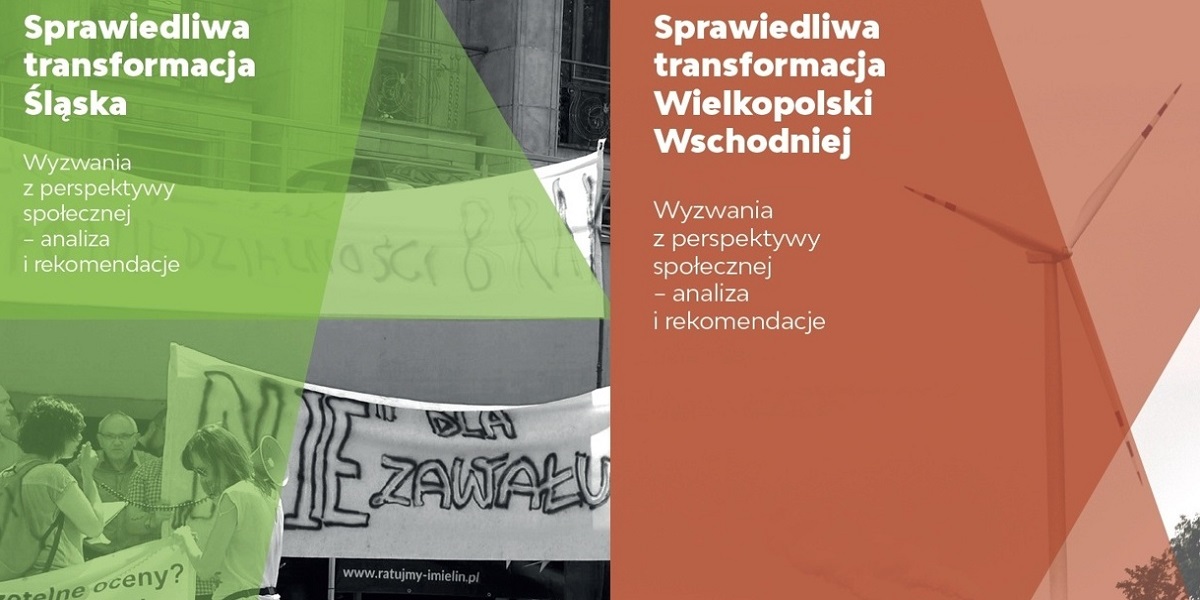
In January 2020, Polska Zielona Siec, a Bankwatch member group in Poland, published two reports (in Polish) that are key to understanding the prospects for just transition in Poland’s coal regions.
The reports were launched against the backdrop of the Just Transition Mechanism announced January 14 in Brussels, and in the context of Poland being now the only country not to support a 2050 climate neutrality goal for the European Union.
In order to access the Mechanism (which includes a 7.5 billion euro Just Transition Fund and up to 100 billion euros in other financial instruments), countries need to propose one or more territorial just transition plans, which need to be consistent with National Energy and Climate Plans (NECPs).
And herein lies the problem for Poland. If it does not take just transition seriously, it will be hard to fullfil these criteria properly.
“The fact that Poland did not support the climate neutrality goal, I am understanding as an element of the negotiation game. But in June, when the next sitting of the European Council takes place, the position of our government is likely to change,” Joana Furmaga, the director of Polska Zielona Siec, said during a press conference launching the two reports taking place on Monday in Warsaw. (More about the event and reports in Polish in this Gazeta Wyborcza article).
“In June, we will be after presidential elections, and after a whole series of negotiations over financial instruments for achieving climate neutrality.
“It will become clearer that we are not getting any money, if we are assuming that we will keep exploiting coal for the next 200 years,” Furmaga concluded.
“This is a game over billions. The government won’t let this slip through its fingers,” the expert said.
In the two reports launched this week, Poland Zielona Siec highlights the challenges facing two main coal regions in Poland, Wielkopolska in the center of the country and Slask in the south, as well as analysing the potential for just transition in these two areas.
In Wielkopolska, where private company ZE PAK has been mining coal after the 1990s with serious negative effects on water availability for farming and tourism purposes, important steps have been made towards designing a vision for just transition, shows the PZS report.
According to the text, a group of city activists from the town of Konin, mainly collaborating with non-governmental organisations, was the first to raise the issue of Eastern Wielkopolska’s just transition in 2017. This was when the first scenario for the region’s development based on renewable energy sources and energy sector innovations was prepared. Civil society was the first to become involved in the work of the EU Platform for Coal Regions in Transition, whereas the region’s authorities officially joined it in 2019.
This resulted in the appointment of a Regional Government Plenipotentiary for the Restructuring of Eastern Wielkopolska at the Regional Development Agency in Konin. One of the main achievements of the Agency was the signing on 3 April 2019 of the “Agreement on Eastern Wielkopolska’s just energy transition”. The Agreement was signed by more than 40 entities from the region representing the local and regional government, the private sector and non-governmental organisations. Another signatory is ZE PAK, the owner of the power stations and the opencast mines.
In the second region analysed – Slask (Silesia), where the vast majority of Polish coal is mined, two competing visions of just transition exist: one of the central government, which, far from starting from a clear coal phaseout date, pretends it can make just transition compatible with continued coal mining; and another of the regional government which, albeit not attributing a key role to coal and placing emphasis on developing an innovative economy and improving local residents’ quality of life, is still insufficiently taking into account the voice of civil society organisations and local communities.
The studies on Wielkopolska and Slask are available here. In the following months, an English version of these analyses will be published. Watch this space.
